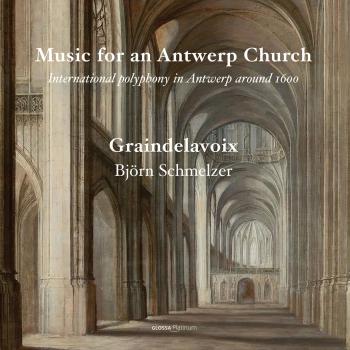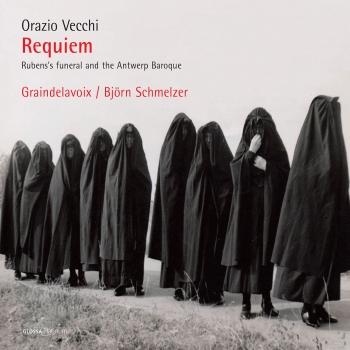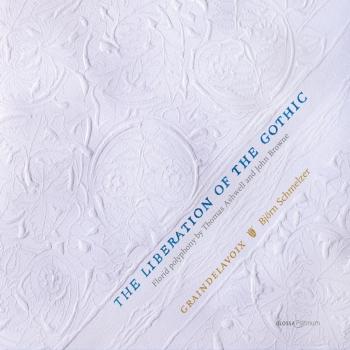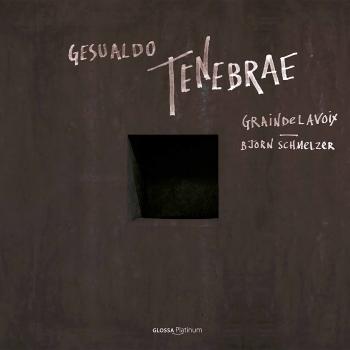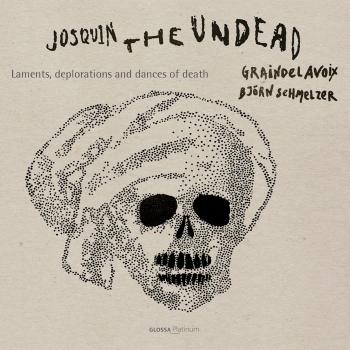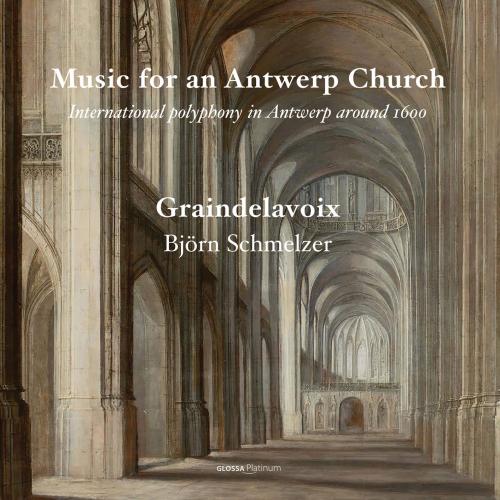
Music for an Antwerp Church Graindelavoix & Björn Schmelzer
Album info
Album-Release:
2017
HRA-Release:
24.03.2017
Album including Album cover Booklet (PDF)
- George de La Hèle (1547-1586):
- 1 Missa "Praeter rerum seriem": Kyrie 06:48
- 2 Missa "Praeter rerum seriem": Sanctus 07:21
- 3 Missa "Praeter rerum seriem": Agnus Dei 05:37
- Alard Du Gaucquier (1534-1582):
- 4 Missa "Maeror cuncta tenet": Sanctus 04:40
- 5 Missa "Maeror cuncta tenet": Agnus Dei 05:58
- Matthias Pottier (1553-1629):
- 6 Missa "Sine nomine": Sanctus 04:34
- 7 Missa "Sine nomine": Agnus Dei 05:46
- Pedro Rimonte (1565-1627):
- 8 Missa "Tota pulchra es": Sanctus 06:33
- 9 Missa "Tota pulchra es": Agnus Dei 05:45
- Orazio Vecchi (1550-1605):
- 10 Missa "Pro defunctis": Domine Jesu Christe 03:22
- 11 Missa "Pro defunctis": Lux aeterna 02:17
- Paolo (1586-1630):
- 12 Missae senis et octonis vocibus: Libera me Domine 04:01
- Duarte Lobo (1565-1646):
- 13 Magnificat sexti toni 09:19
- Tylman Susato (1500-1561):
- 14 Salve Antverpia 10:43
Info for Music for an Antwerp Church
Little attention has been given on record so far to the music and writings emanating from the flourishing economic and cultural environs of 13th-century Brabant but it is from the remarkable outpouring associated with this medieval duchy – covering the areas of Brussels, Antwerp and the present day Belgian provinces of Vlaams and Walloon Brabant as well as Noord-Brabant in The Netherlands – that Björn Schmelzer and Graindelavoix have created their third recording for Glossa. In Caput (GCD P32101) and Joye (GCD P32102) Schmelzer and his Antwerp-based ensemble explored in the late medieval music of Johannes Ockeghem and Gilles Binchois undercurrents that illuminate our own times. What preoccupies Graindelavoix in early music is the bond between notation and what eludes it: the higher consciousness and savoir-faire that the performer brings to a piece (ornamentation, improvisation, gestures...). An integral part of this new project – uniting three broad groups active in Brabant, mystics, monks and minstrels – is where it was recorded: the Dominican Church in Leuven, where Schmelzer considers much of this music may have been performed. Constructed following the model of the Sainte Chapelle in Paris, the church retains an acoustic unchanged by the passing of time and contributes to a new CD which provides a fascinating musical account of an important region of Europe in the 13th century.
Patrizia Hardt, voice
Silvie Moors, voice
Yves Van Handenhove, voice
Lieven Gouwy, voice
Paul De Troyer, voice
Thomas Vanlede, voice
Bart Meynckens, voice
Björn Schmelzer, voice
Jan Van Outryve, guitar, lute
Thomas Baeté, fiddle
Floris De Rycker, lute, guitar
Björn Schmelzer, director
Graindelavoix
is much less an early music ensemble and much more an art collective experimenting between the fields of performance and creation, comprising singers and instrumentalists led by Björn Schmelzer. Taking its name from an essay by Roland Barthes (“le grain, c’est le corps dans la voix qui chante, dans la main qui écrit, dans le membre qui exécute...”), where Barthes was looking for what constitutes the gritty essence of a voice, Graindelavoix experiments with what one does with the “grain”, the physical and spiritual reflection of the voice.
Formed in 1999 by Schmelzer and based in Antwerp in Belgium, the collective works with material as diverse as Ockeghem’s polyphony, the plainte, machicotage, Mediterranean practices, late scholastic dynamics and kinematics, the affective body, gesture and image culture... What is preoccupying Graindelavoix in early music is the bond between notation and what eludes it: the higher consciousness and savoir-faire that the performer brings to a piece (ornamentation, improvisation, gestures...). Schmelzer works with singers and instrumentalists who embrace diversity, heterogeneity, ornamentation and improvisation in their music-making. In many ways, an ethno-musicological approach to early music.
Graindelavoix is a “special guest” at the Muziekcentrum De Bijloke in Ghent and has an artistic partnership with the Cultuurcentrum in the further Belgian city of Genk.
In Poissance d’amours Schmelzer – an ethnomusicologist by training – explores the music and writings of mystics, monks and minstrels active in 13th century Brabant for Glossa. This release and the recordings of music composed by Johannes Ockeghem (Caput) and Gilles Binchois (Joye) are allied to performances – in concert and music theatre formats – that are the accumulated fragments of a wider work and research process. Graindelavoix is offering a challenging new insight into the performances of music from the past.
Björn Schmelzer
studied anthropology and musicology but as a multidisciplinary artist he is primarily self-taught. He is the founder and artistic director of graindelavoix, an artist company that starts from folds and faults in ancient repertoires to rehabilitate the fundamental anachronism of practices in time. From this point of view, graindelavoix brings together artists of all disciplines: musical, visual and performative…Over the course of long research stays, Schmelzer studied primarily in the Mediterranean world, in Italy (Sardinia, Sicily), Spain, Portugal and Morocco, specializing in vocal repertoire and performance practice. He studied several medieval vocal traditions in depth, their continuation and survival in later times, ornamentation styles, and the logic of operative knowledge. He combines this work with insights from anthropology, history, human geography and ethnomusicology, resulting in various publications and concert programs. He is regularly requested as a guest conductor and lecturer. Björn Schmelzer has published several essays and articles for literary magazines, specialized magazines, academic publications and exhaustive CD booklets. He is currently writing a book about vocal practices, derived from 10 years of expertise with graindelavoix. With graindelavoix he has received several prizes and awards such as 'Young Musician of the Year' by the Belgian Music Press.
In 2011, Schmelzer became the first "Creative Fellow in Musicology", a collaboration between the Utrecht Early Music Festival and the Centre for Humanities at Utrecht University. Besides his activities as artistic director of graindelavoix, he makes films, both fictional and documentary, often associated with graindelavoix projects. As a playwright and director, he created, among others, Cesena with Anne Teresa de Keersmaeker, Muntagna Nera with Filip Jordens and Jan Van Outryve, Ossuaires with Koen Broos and Wim Scheyltjens and Trabe Dich Thierlein! with Margarida Garcia, Koen Broos and David Hernandez. Most recently, he designed audio-visual and interdisciplinary installations with Koen Broos and Margarida Garcia in The Hospital of Undersized Gestures.
Booklet for Music for an Antwerp Church











